Case Studies.
Add Case Study
Our Case Study database tracks 22,657 case studies in the global enterprise technology ecosystem.
Filters allow you to explore case studies quickly and efficiently.
Download Excel
Filters
-
(6,653)
- (2,601)
- (2,127)
- (945)
- View all
-
(5,642)
- (2,469)
- (1,692)
- (826)
- View all
-
(5,571)
- (2,178)
- (1,766)
- (643)
- View all
-
(5,247)
- (2,179)
- (1,715)
- (1,321)
- View all
-
(2,881)
- (1,448)
- (574)
- (376)
- View all
- View all 15 Technologies
- (1,985)
- (1,985)
- (1,915)
- (1,679)
- (1,629)
- View all 42 Industries
- (8,728)
- (4,742)
- (3,618)
- (3,233)
- (2,947)
- View all 13 Functional Areas
- (3,304)
- (2,787)
- (2,603)
- (2,006)
- (1,630)
- View all 129 Use Cases
- (13,581)
- (5,296)
- (4,272)
- (3,520)
- (2,856)
- View all 9 Services
- (504)
- (432)
- (416)
- (382)
- (301)
- View all 1083 Suppliers
Selected Filters
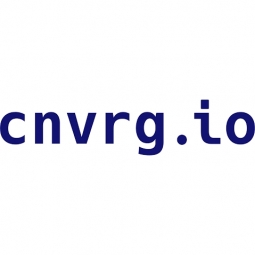
|
Deploying Large-Scale Real-Time Predictions with Apache Kafka: A Playtika Case Study
Playtika, a leading Game-Entertainment company, faced significant challenges in scaling the production of real-time machine learning. With over 10 million daily active users, 10 billion daily events, and over 9TB of daily processed data, the company's existing batch and web services deployment methods were unable to scale to meet their needs or produce predictions in real-time. The REST APIs in their ML Pipelines led to service exhaustion, client starvation, handling failures and retries, and performance tuning of bulk size for batch partitioning. Playtika’s event-driven ecosystem required a solution that could support real-time streaming of their production models and scale without downtime. They also needed a solution that could integrate with various processes including Airflow and Spark, and handle bursts, peaks, and fast creation of new ML Pipelines.
|
|
|
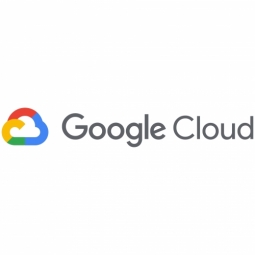
|
Body & Fit: Enhancing Ecommerce with Crystalloids and Google Cloud
Body & Fit, a leading sports nutrition and dietary product business, was facing challenges with its existing ecommerce platform. The company, which processes almost two million orders a year and offers more than 3,000 items, was planning a strategy of rapid growth, aiming to double its presence from seven to twelve countries. However, scalability was a challenge on its existing ecommerce platform, and weak integration between components made it difficult to track customer journeys across touchpoints. The company needed a solution that could deliver excellent customer experience, potential for global expansion, continuous optimization, and personalized content. Furthermore, Body & Fit wanted to create a unified customer journey by combining data from multiple sources, including its ERP, ecommerce solution, event-stream processing, frontend interfaces, online marketing, customer service solution, and analytics.
|
|
|

|
Bonnier Publications: Leveraging IoT for Data Democratization and Business Transformation
Bonnier Publications, a Copenhagen-based media company, was facing the challenge of transitioning from a print to a digital multi-format business model in an ever-changing media environment. The global magazine industry was shrinking every year, and Bonnier knew that this digital transformation was critical for its survival and growth. The company set a six-month deadline to achieve this goal, with the challenge being a complete overhaul of its customer data and the way it engaged with customers online to maximize ecommerce conversion rates. The initial target was to gain 25,000 new subscriptions. Bonnier's success largely depended on its reader base, with B2C business accounting for 75% of its revenue. Therefore, it was crucial for the company to understand its readers and their preferences.
|
|
|

|
Book Creator: Transforming Education through Digital Book Creation
Book Creator, a self-publishing tool, aimed to shift its focus towards serving the K-12 market and enhance student engagement by unlocking their creativity. The company wanted to provide a platform where students and teachers could collaboratively create and publish ebooks and learning materials. However, with a small team of 13, they faced the challenge of reaching millions of students and handling high-variability workloads. Additionally, they needed to comply with strict data access management requirements including GDPR in the European Union and FERPA/COPPA in the U.S. The company also wanted to rapidly develop new features while reducing the complexities of storing data and scaling access to it.
|
|
|

|
Boxed: Leveraging IoT to Enhance Wholesale CPG Experience Amid Rapid Growth
Boxed, a leading digital wholesaler, was founded in 2013 with the aim of making bulk shopping easy, convenient, and accessible for consumers. As the COVID-19 pandemic hit the U.S., Boxed experienced a significant increase in traffic and demand on its platform. The shift towards online grocery shopping, which had been gradual, suddenly accelerated, and Boxed needed to scale up its infrastructure and data processing to keep up with the flood of orders that nearly doubled during the pandemic. With the large increase in concurrent users on the site, Boxed’s database was hit with thousands of read/write operations per second, specifically for operations like creating new user accounts, adding/removing items to cart, and checking out. These actions required writes to its database, and Boxed had to scale up the resources available to its database to handle this increase in operations per second.
|
|
|
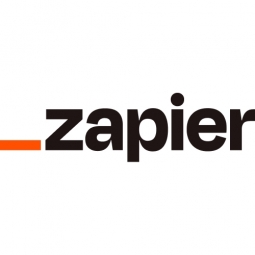
|
Icebreaker's Customer Engagement Transformation with Zapier and Wufoo
Icebreaker, a clothing brand that uses merino wool from New Zealand, faced a significant challenge in managing and deciphering thousands of customer feedback forms. The company used Wufoo, a tool for creating customized forms, to collect feedback from customers about their shopping experience. However, the process of extracting, formatting, filtering, organizing, and sometimes translating the information from these forms was time-consuming and inefficient. As a result, the customer's voice was only being heard about once a month. The team needed a way to automate this process to ensure that customer feedback was promptly and efficiently addressed.
|
|
|
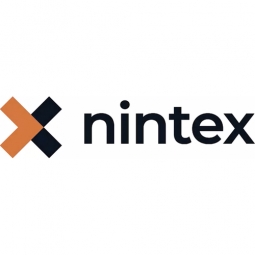
|
Revitalizing Public Service with Process Automation: A Case Study on County Court of Victoria
The County Court of Victoria, which hears about 12,000 cases a year, was struggling with an overwhelming amount of paperwork. The existing legacy case management system was not comprehensive and was difficult to use. The court needed to modernize its high-volume paperwork management but was unsure of where to start or which technology to use. The first process that needed attention was the directions correspondence workflow, which generated hundreds of pieces of correspondence that had to be individually printed and assigned. The next challenge was the convoluted manual process of auditing and compliance, which required pulling files from different locations and was difficult to manage due to lack of a top-down view of all activities. Lastly, the court faced the challenge of collecting information for cases that had a plea or trial which may not be recorded in the case management system. The existing method was antiquated and fragmented, requiring hard copy questionnaires to be transposed and typed into spreadsheets.
|
|
|
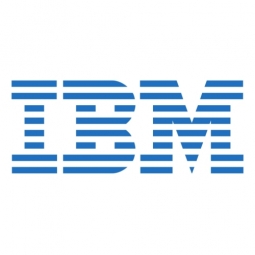
|
Dow Chemical Company optimizes facility management worldwide
The Dow Chemical Company, a USD60 billion enterprise composed of a worldwide network of 13 business units, faced challenges in setting and achieving enterprise-wide goals due to its decentralized business structure. The company needed to meet the differing facility needs of its various businesses while also increasing office and lab space capacity use to 90 percent and improving capital planning, real estate lease management, operations, maintenance, and energy consumption on a global basis. The Lab and Office Facilities Management (LOFM) group at Dow, which provides facilities management services and solutions that support more than 20 million square feet of lab and administrative office space worldwide, was tasked with driving these initiatives. However, reporting in all of these areas was manual, disconnected, and spreadsheet-driven, making it difficult to leverage data effectively.
|
|
|
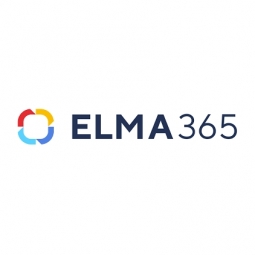
|
Anorbank's Transformation into Uzbekistan's First Fully Digital Bank with ELMA
Anorbank, the first fully digital bank in Uzbekistan, faced the challenge of implementing a comprehensive digital banking system during the pandemic. The bank needed to provide services without requiring customers to visit physical offices, aligning with the modern lifestyle of increased mobility and preference for digital technologies. The bank's strategy required a unique platform that could process requests quickly while maintaining an individual approach to each client and guaranteeing data security. The bank's team, 70% of which consisted of IT employees, was tasked with the continuous development of this platform. The challenge was not just to describe procedures in Word documents, but to create complete digital processes. This required integration with various IT systems, making the project complex due to the number of users, different groups of bank users, and the large number of required integrations.
|
|
|

|
Transforming Business Model with IoT: A Case Study of The Perk Coffee Shop
The Perk, a local coffee shop in Winter Park, Colorado, faced a significant challenge when the state instructed restaurants to switch to pick-up orders only due to the COVID-19 pandemic. The Perk was not just a coffee shop but a gathering place for the community, offering a range of products from coffee beverages to whole beans and local Colorado craft beers. The sudden shift in the business model due to the pandemic restrictions posed a significant challenge to the coffee shop. They needed to quickly adapt to the new situation and find a way to continue serving their customers while adhering to the new regulations. The challenge was to set up an efficient online ordering system that would allow them to continue their operations and serve their customers without any physical interaction.
|
|
|
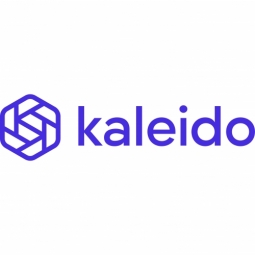
|
Blockchain Innovation in Surety Bond Industry: A Case Study on The Institutes RiskStream Collaborative®
The Institutes RiskStream Collaborative®, the largest enterprise-level blockchain consortium in the risk management and insurance industry, identified a significant challenge in the surety industry. The industry is characterized by multi-party data verifications and exchanges between the principal, obligee, and surety, which often leads to inefficiencies and complexities. The Surety Bonds Power of Attorney use case was identified as a starting point to address these issues. However, the process of enabling real-time bond signature and verification, which is crucial to the overall solution, was fraught with difficulties, including high costs, time consumption, and risk.
|
|
|

|
Leveraging IoT for Enhanced Fan Engagement: A Case Study on Seattle Seahawks
The Seattle Seahawks and Sounders FC, two teams with the same ownership group, are known for their passionate and vocal fan base. The management team of these teams wanted to ensure that they were effectively capturing and responding to fan feedback. However, the challenge was to manage and analyze the massive amount of feedback received from the fans, which was not limited to the game day but was a continuous process. The management team needed a system that could collect, organize, and summarize the feedback in a way that was easy to understand and actionable. The feedback was crucial for the teams as it played a significant role in their decision-making process, including team name selection and the potential removal of the general manager.
|
|
|

|
BNP Paribas and Greenly's Collaborative Effort to Reduce Carbon Footprint
BNP Paribas, a leading bank, recognized the urgent need to address the environmental impact of human activities, particularly the carbon footprint of individuals. The bank understood that without a significant reduction in greenhouse gas (GHG) emissions, the global surface temperature could rise by 2°C to 3.5°C by 2100, leading to an increase in extreme weather events and negative consequences for human health and development. The bank also acknowledged the Paris Agreement's commitment to limit CO2 emissions to keep global warming below 2°C. However, the average carbon footprint of a French person in 2018 was 11.2 t CO2eq per year, significantly higher than the target of about 2 tonnes of CO2 per year per capita. BNP Paribas realized that in addition to structural changes in production patterns, individual commitment to decarbonizing consumption and lifestyle was crucial to achieving these reduction targets.
|
|
|

|
Adidas' Experiential Marketing Strategy: A Case Study
In June 2015, Adidas Football embarked on a mission to identify the world's best game changers and playmakers. The search began at The Base, Berlin, during the UEFA Champions League Final. The challenge was to expand this initiative globally and engage football enthusiasts in a unique and exciting way. Adidas aimed to create a buzz around the brand and its association with football, particularly in Asia. The company wanted to launch 2v2 football tournaments across three main cities – Bangkok, Kuala Lumpur, and Jakarta. The challenge was not only to organize these tournaments but also to ensure significant participation and generate substantial PR coverage.
|
|
|

|
Bentley Motors' Digital Transformation with Tableau Self-Service Analytics
Bentley Motors, a globally recognized luxury car brand, was facing a significant challenge in the wake of the automotive industry's unprecedented changes. The company, known for its bespoke luxury cars, realized the need for a transformation to ensure its long-term success. This transformation was not only about switching to an all-electric portfolio of vehicles by 2030 but also about implementing effective digital transformation throughout the company. The goal was to streamline operations, improve customer service, and solidify Bentley's position as a global automotive leader. The company also aimed to enhance its customer experiences, which are a key hallmark of Bentley, through a more data-driven approach. However, the challenge was to find a solution that could help them achieve these goals.
|
|
|
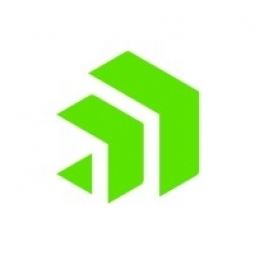
|
BBC Leverages IoT for Real-Time, Customizable, and Interactive Content Delivery
The British Broadcasting Corporation (BBC) faced several challenges with its legacy systems. For the BBC iPlayer, the legacy system was slowing productivity, innovation, and content delivery. The growing content required massive scalability and faster response times. For the BBC Sport website, the challenges were the integration of diverse data, such as statistics and videos, rapid application development to meet game deadlines, scalability to support tens of thousands of transactions per second, and the utilization of open standards for mobile delivery. The BBC needed to upgrade the iPlayer to support a growing user base, deliver content that could be viewed on multiple devices, and personalize that content. The BBC also wanted to deliver real-time, customizable, and interactive online content for the Summer Olympics.
|
|
|

|
AkzoNobel: Revolutionizing Color Prediction with IoT
AkzoNobel, a Dutch paint and coatings company, has been at the forefront of color matching for two centuries. However, the company faced challenges in keeping up with the rapidly evolving color trends in industries like automotive and interior decor. The traditional method of color prediction, which involved complex mathematical models, was no longer efficient or innovative. The paint industry was under immense pressure as new colors emerged daily, and manufacturers constantly sought new finishes to gain a competitive edge. AkzoNobel's color prediction process, which involved deciphering multiple physical elements influencing color, was complex and time-consuming. The company needed to innovate and adapt to meet the modern demands and expectations of its customers.
|
|
|

|
Accelerating Root Cause Analysis in Automotive Manufacturing with PathWave Manufacturing Analytics
A global automotive component manufacturer was facing a significant challenge in maintaining high First Pass Yield (FPY) rates in their production lines. Despite having real-time monitoring displays and an in-house analytical tool, the company was struggling with functional test failures that led to FPY rates dropping below 90%. The company spent approximately six months trying to identify the root cause of the issue, which turned out to be a faulty fixture in the functional test systems. This lengthy process involved extensive manual data aggregation and transformation, and required the production line to be shut down for troubleshooting. Even after identifying the issue, the company had to perform monthly maintenance on all fixtures in the functional tester lines to mitigate the FPY loss.
|
|
|
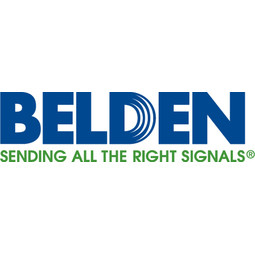
|
UBS Arena: Enhancing Fan Experience with IoT Connectivity
UBS Arena, a newly built 18,000-seat venue in New York, was designed to host about 150 events annually, with a focus on providing a thrilling yet safe experience for fans. The arena needed a robust cabling and connectivity solution to support its sophisticated sound systems, a 5G network, a distributed antenna system (DAS), New York’s largest scoreboard, and two levels of high-resolution LED ribbon boards. The venue also required a network infrastructure that could support public health and safety measures, such as automated ventilation systems, grab-and-go mobile ordering, and contactless purchases. The wireless network had to support the seamless connection of tens of thousands of devices in the venue’s completely cashless environment. Additionally, smart restroom technology needed to connect to the network to track and report on inventory levels and cleaning needs.
|
|
|
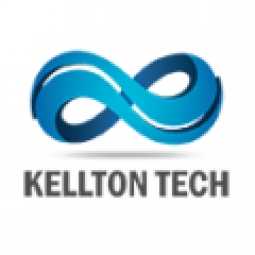
|
Innovation via Integration: A Case Study on a Smart Security Solutions Giant
The client, a smart security solutions company with over 150 years of legacy and $3.17BN annual revenue, was facing several challenges. The company's infrastructure was running on individual Pods, which increased running costs and created bottlenecks for large scale operations. The lack of automation for UI and test-cases deployment resulted in manual testing, which increased operational time and effort. Additionally, the inability to extend and decentralize access control among individuals was limiting the IoT-based security solutions offered by the company. The non-extendibility of the mobile-app features restrained user experiences and prevented users from sharing their access control.
|
|
|

|
Automating RFQ Lifecycle for a Leading Manufacturer of Utility Transmission Parts
The client, a market-leading manufacturer of utility transmission structures and small cell towers for the utility and telecom industry, was facing a significant challenge. They wanted to digitize and migrate their legacy applications and databases to the cloud. The challenge was not just about the migration, but also about automating their sales and quotation process. The existing system was manual and time-consuming, leading to delays and inefficiencies. Additionally, the client had to deal with system integration for structural blueprints, which was a complex task with numerous considerations and no scope for error.
|
|
|
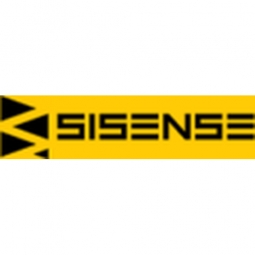
|
Interfolio's Modern Data Strategy: A Case Study
Interfolio, a software service provider for higher education institutions, faced a significant challenge as its user base and data volume grew. The company needed a modern data strategy that could unify internal data, streamline reporting processes, and be flexible and scalable enough to serve as an embedded solution within the Interfolio platform. The primary challenge was selecting a BI platform and a cloud data platform that could handle multiple data sources, model complexity, and enable straightforward dashboard creation. The company had been using a competing BI vendor and an in-house solution for managing their consumer-based SaaS metrics and reporting, and for managing reporting data for quarterly business reviews. However, as data sets grew exponentially, these solutions were no longer performant or scalable.
|
|
|
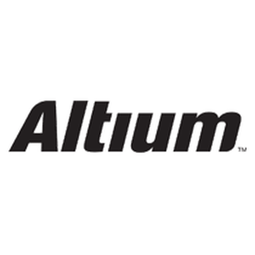
|
SpaceQuest's Transformation with Altium Designer: A Leap into Advanced Satellite Technology
SpaceQuest, a satellite technology company, was facing challenges with their PCB layout on complex designs and often had to outsource projects. With a major microsatellites program on the horizon, they needed a more efficient solution. They were also in the process of developing microsatellites for asset tracking and management services from low earth orbit and exploring how to collect AIS signals from space. However, their preliminary design of a payload to collect AIS signals was still a prototype and their development processes were evolving. In a critical situation, they had to integrate a brand new payload relatively late in a satellite development project, with only six weeks remaining before the design was scheduled to ship for launch. The task of delivering a completely new electronic board on such a tight schedule using their previous tools and processes was daunting.
|
|
|
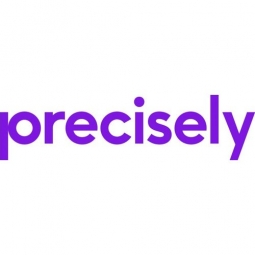
|
Clear Technologies: Enhancing Data Availability and Migration with IoT
Clear Technologies, a company that helps businesses maximize the value from information technologies, operates in a highly competitive environment. The company not only competes against other vendors but also against the status quo. To secure a sale, Clear Technologies often has to convince potential customers that the benefits of the new technology justify the cost of switching from the existing technology, including any associated downtime costs. The company's value proposition is to increase organizational effectiveness through innovative products, services, and solutions. However, the hardware and software it sells can't provide value if it is down. Therefore, part of Clear Technologies' revenue is derived from ensuring that their customers' data and applications are always available, even in the event of system failures, disasters, or normal planned maintenance. To support this business model, Clear Technologies needed a business partner that could supply advanced high availability (HA), disaster recovery (DR), and migration solutions.
|
|
|

|
Revolutionizing Patient Rehabilitation with Harmonic Bionics' Harmony SHR
The World Health Organization estimates that hundreds of millions of people suffer from over 600 different neurological disorders, including strokes, Alzheimer’s disease, epilepsy, Multiple Sclerosis, and Parkinson’s disease. In 2017, the global prevalence of strokes alone was 104.2 million. For survivors, the road to recovery is challenging and requires extensive rehabilitation with the continued assistance of therapists, doctors, and clinicians. To regain motor functions after suffering strokes or other sudden onset conditions that can cause brain or spinal cord injuries, repetitive motions are essential to help patients regain neuroplasticity. However, this task is daunting for both therapists and patients, requiring a significant amount of time and effort.
|
|
|
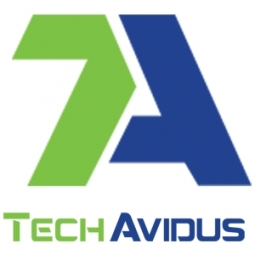
|
Transforming eCommerce with a Multi-Vendor Marketplace Platform
The client aimed to create a multi-vendor eCommerce platform that would allow multiple vendors to sell a wide range of products, from electronic gadgets to beauty products, through a single storefront. The platform needed to provide personalized panels for each vendor, enabling them to post their products and maintain their records privately. The client also wanted to streamline the product management and listing process for vendors. Additionally, the platform was to offer features to assist buyers, such as the ability to compare products from different vendors and create a wish list. The client also wanted the platform to support the running of multiple advertisements through premium listing. The challenge was to convert these requirements into a fully-functional, technologically advanced multi-vendor eCommerce platform.
|
|
|
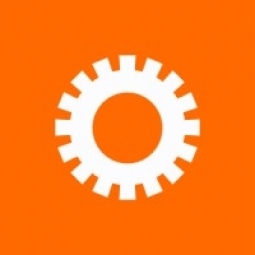
|
Pioneering Lead Generation with Conversational Messaging: A Case Study of Open Universities Australia
In 2019, Open Universities Australia (OUA) decided to transition from live chat to conversational messaging, coinciding with the rebuilding of its digital platform. The goal was to enhance service for the 25,000 students they were catering to at the time. However, the contact centre required all students to create a new password, a task that posed significant challenges in a non-automated world. Additionally, OUA was using Facebook ads that linked to a form, which then funneled details to an outbound team for follow-up. This method was not particularly effective in terms of sales or user experience.
|
|
|
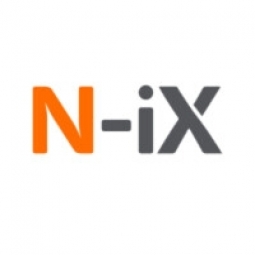
|
Technical Consulting and ECM Solution Development for US-based Utility Providers
Utility providers in the USA were struggling with large volumes of data and documents, slow and inflexible legacy systems, and inefficient operational processes. The main goals were to increase the processing speed of their software, automate operations, and streamline business processes using OpenText solutions for Enterprise Content Management. The clients also sought to resolve issues such as a slow billing cycle, lack of flexibility, a lot of manual work, and human errors. The challenges included improving system flexibility to simplify changes and collaboration, automating the billing cycle, shortening the document approval cycle, building a scalable solution that could generate thousands of documents quickly, and ensuring solution maintainability.
|
|
|

|
Revolutionizing Solar Energy Production with Morgan Solar and Altium
Morgan Solar, founded in 2007, has been on a mission to make solar energy the most widely used and affordable power source in the world. However, the solar market has been changing rapidly, with product costs decreasing significantly over the past decade. This has increased the urgency for Morgan Solar to develop and patent newer, more efficient solar energy solutions. The company has had to consistently innovate to keep up with the fast-paced industry and stay ahead of the curve. The challenge was to accommodate less forgiving production timelines and increase product turnover, while maintaining the quality and efficiency of their solar panels and solar tracking systems.
|
|
|

|
Development and Implementation of a Cross-Platform Mesh Network Solution for Dahrwin
Dahrwin, a US-based company that develops mesh network solutions, was faced with the challenge of implementing their idea of a cross-platform mesh network solution. The solution was to be built from scratch to meet the needs of different industries, such as V2V communications and for establishing connections in zones with no service. The company needed a strong engineering team specializing in both hardware and firmware development. The challenges included designing and implementing the prototype of a dynamic mesh network solution using Android based mobile phones and utilizing WiFi ad-hoc capability, developing hardware for an efficient mesh network, developing the software protocol powering the dynamic work of the network, ensuring compatibility with different platforms, implementing a faster launch of embedded Linux, and taking into account obstacles, noise and other conditions to ensure the highest quality of the solution.
|
|




